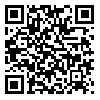BibTeX | RIS | EndNote | Medlars | ProCite | Reference Manager | RefWorks
Send citation to:
URL: http://tumj.tums.ac.ir/article-1-1110-en.html
Background: The important of angiogenesis for the progressive growth and viability of solid tumors is well established. Only few data are available for hematologic neoplasms.
Materials and Methods: To investigate the role of angiogenesis in the acute myloid leukemia (AML) bone marrow biopsies from 30 adults with newly diagnosed, untreated AML(day 0) were evaluated. Further studies were done after completion on remission induction of treatment (day 35 of 7×3 regimen n=13, complete remission in AML (m3) treat with arsenic trioxide n=17). Micro-vessels were scored in at least 3 areas of highest micro-vessel density in representative section of each bone marrow specimen using immunohistochemistry for Von Willbrand factor.
Results: Median micro-vascular density (MVD) were in AMLM3 patients before treatment, %6.81±3.58 and after treatetment %3.48±3.06 (p<0.0001). In other AML patients MVD were befor treatment %3.38 and after treatment %3.6.
Conclusion: In conclusion, there is evidence of increased micro-vessel density in the bone marrow of patients with AML, which supports the hypothesis of an important role of angiogenesis in AML. MVD was reduced with chemotherapy and arsenic. Furthermore , these finding suggest that antiangiogenesis therapy might constitute a novel strategy for the treatment of AML.
| Rights and permissions | |
 |
This work is licensed under a Creative Commons Attribution-NonCommercial 4.0 International License. |





